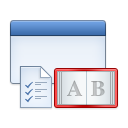 | To improve the productivity of application development, User Interface Defaults, a feature of SQL Workshop Utilities, supports the specification of friendly names and other attributes. This enables the create wizards to default the friendly name rather than the actual name (for example, specifying Employee Name for EMPNO). You can define labels, format masks, help text and other attributes.
Additional features include:
- Synchronizing pages with User Interface Default managed labels and format masks
- Managing User Interface Defaults by table and column or by attribute name
- Populating User Interface Defaults from completed form or report pages
|